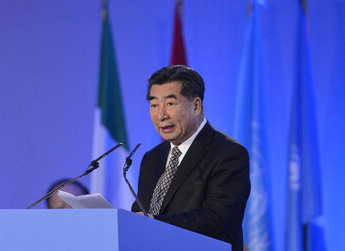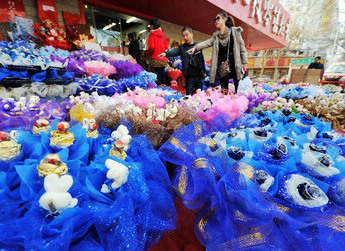
"Most of the value of these products comes from outside China, including from the US. Yet the whole phone or computer is counted as a Chinese export to the US. This doesn't make sense," Scissors wrote.
Eswar Prasad, a professor at Cornell University and a former China division chief at the International Monetary Fund, said China is the one trading partner to which US exports are on track to double during a five-year period.
"If China's recent shift toward private consumption-led growth proves durable and intensifies, its demand for imports of consumer goods and services will rise, especially if the exchange rate continues to appreciate," Prasad said.
"This could help further boost US exports and solidify China's position as one of the fastest-growing markets for US exports."
China's foreign trade increased 26.7 percent to $345.6 billion in January from the same month in 2012, according to the General Administration of Customs. Its $3.3 trillion reserves in foreign currencies could also help China revive domestic demand and reduce its dependence on exports for economic growth.
"While the strong increase in Chinese imports of US goods and services is certainly encouraging, until China begins to move away from its export-led model of development and do more to replace export-led growth with internal demand-driven growth, there will continue to be trade tensions with the United States and other countries," said Edward Alden, a Washington-based senior fellow at the Council on Foreign Relations.
Scissors, of the Heritage Foundation, argued that the frequently raised issue of deficits and surpluses is more about competition than numbers.
"Being open to competition brings prosperity at home and keeps the world at your door," he said.
Scissors' point hits home when the two economic superpowers encounter economic disputes, including trade.

















 Young Spanish scientist has a career 'made in China'
Young Spanish scientist has a career 'made in China'


![]()
